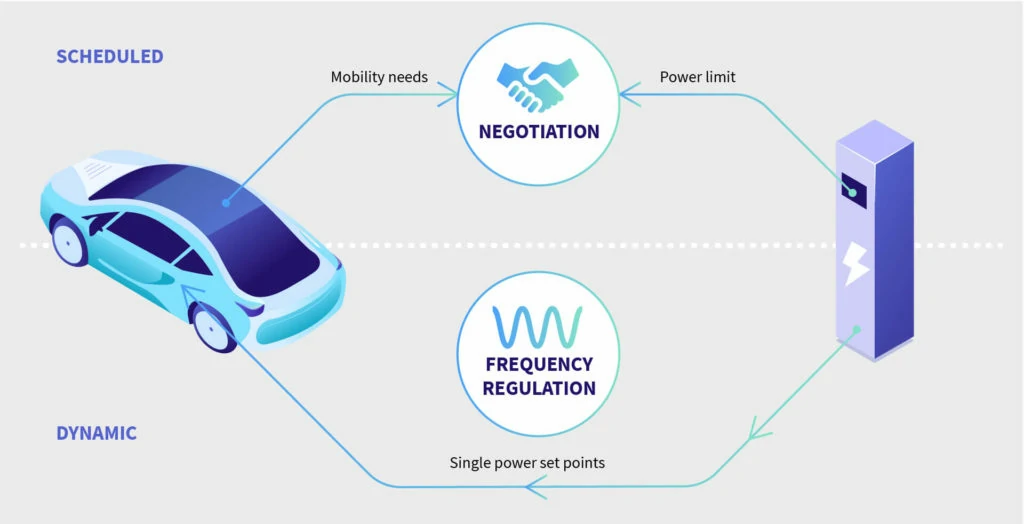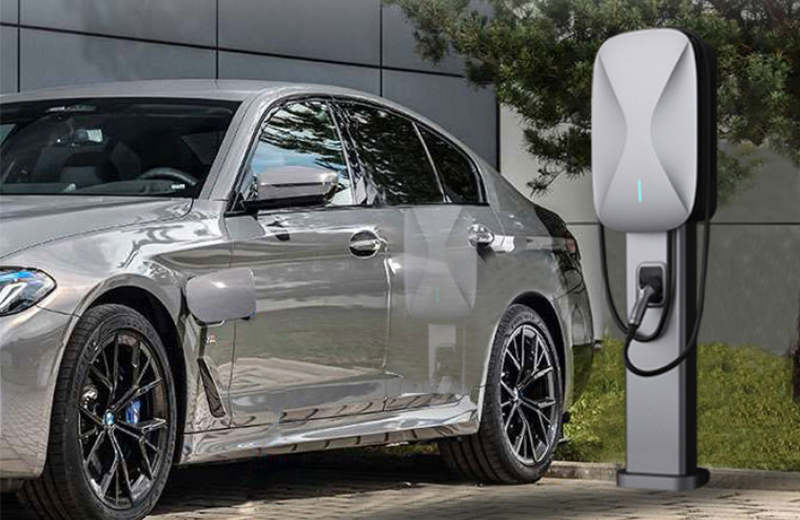
Vehicle-to-Grid (V2G): The Future of EV Charging and a Smarter Energy Grid
Vehicle-to-Grid technology is redefining the role of electric vehicles, turning them into dynamic energy assets that benefit drivers, utilities, and the planet.

Also known officially as ‘Road Vehicles-Vehicle to grid communication interface’, ISO 15118 is an international standard intended to define a vehicle-to-grid – V2G – communication interface for the bi-directional charging or discharging of electric cars. It provides a number of use cases including smart charging, secure communication as well as Plug and Charge functionality used by certain electric vehicle networks.
ISO 15118 is among the International Electrotechnical Commission’s group of standards for both electric industrial trucks and electric road vehicles. Although it was launched just over a decade ago, ISO 15118 is among the most future-proof and important standards today.
A built-in smart charging feature makes it possible to match the capacity of the grid with the energy demand for the steadily growing number of electric vehicles that connect to the electrical grid. Moreover, ISO 15118 also allows bidirectional energy transfer to facilitate vehicle-to-grid usage by feeding energy from the electric vehicle back to the grid whenever needed. It also enables more grid-friendly, secure, and efficient charging of electric vehicles.

(Source: wikipedia.com)
In the EV charging system, the power grid is one of the most critical infrastructures that need to be safeguarded against potential harm and the EV driver needs to be billed properly for the energy used to charge the vehicle.
But without secure communication between the charging stations and the EVs, malevolent third parties can hijack and alter messages and interfere with billing information.
To avoid this, ISO 15118 features a mechanism called Plug & Charge, which deploys multiple cryptographic tools to secure communication and guarantee the confidentiality, authenticity, and integrity of the exchanged data.
This standard allows the integration of electric vehicles into the smart grid (vehicle-to-grid or vehicle-2-grid). To put it simply, a smart grid is a type of electrical grid that interlinks power producers, grid components such as transformers as well as consumers through communication and information technology.
ISO 15118 enables the charging station and electric vehicle to dynamically swap data based on which charging schedule can be negotiated or renegotiated. Electric vehicles need a grid-friendly environment – grid-friendly is the mechanism that supports the charging of several vehicles at once without overloading the grid. Smart charging apps will compute each charging schedule for each vehicle as well as the mobility needs of individual drivers, like driving range and departure time.

(Source: garocharging.com)
By doing so, each charging period will match perfectly with the capacity of the grid to the energy demand of multiple charging vehicles.
One of the most important use cases that ISO 15118 can help realize is the charging in times when the general electricity use is low and or in times of high accessibility of green energy.
User convenience is essential when it comes to a seamless charging experience. The Plug & Charge mechanism that comes with ISO 15118 allows electric vehicles to identify themselves automatically to the charging station and get approval to access to electrical energy required to recharge the EV battery. It is all based on public-key infrastructures and digital certificates provided through Plug & Charge function.
All the driver has to do is plug the charging cable into the EV and the charging station or in the case of wireless charging, park above the ground pad.
With this new technology, entering your credit card, finding an RFID card, or opening an application on your phone to scan a QR code is a thing of the past.
One of the most important aspects of ISO 15118 is the EV charging method and the energy grid in both directions. Vehicle-to-Grid and Vehicle-to-Home are two of the most common methods.
Theoretically, there is a way of stabilizing a power grid exposed to high loads at specific times. In this situation, the EV serves as a type of power reservoir that can supply power back into the electricity grid through a charging station. This enables unused electricity to be stored and used in another station.
you can know more in this article: EV Bidirectional Charging: There’s Always Something To Do

(Source: Joint.com)

As mentioned elsewhere in this article, ISO 15118 is also used in heavy-duty vehicles like public transportation and harbor-automated guided vehicles. When used in commercial operation, the usage of ISO 15118-8 must be carefully considered because there is no means of guaranteeing operation uptime while using wireless communication. To solve the problem, users can use the same protocol used for passenger EV charging i.e. ISO 15118-3.
Note that ISO 15118 doesn’t clearly specify the internal communication of the vehicle between charging equipment and battery as well as the communication of the supplied equipment communication controller (SECC) on the charger to other components and equipment apart from a few dedicated message elements about the charging. As per the standard, any connection beyond the (SECC) as well as the message exchange method are considered out of the scope as a particular use case.

Vehicle-to-Grid technology is redefining the role of electric vehicles, turning them into dynamic energy assets that benefit drivers, utilities, and the planet.

At this ACT Expo, Joint Tech will unveil its latest advanced commercial Level 2 charging solution, designed to enhance the user experience. Meanwhile,powered by new technology, our commercial chargers effectively address multiple challenges encountered in real-world applications.

The new tariffs imposed by the United States have once again caused global economic tension.In order to respond to the impact on the global supply chain, Joint new factory in Malaysia offers favorable tax rates.